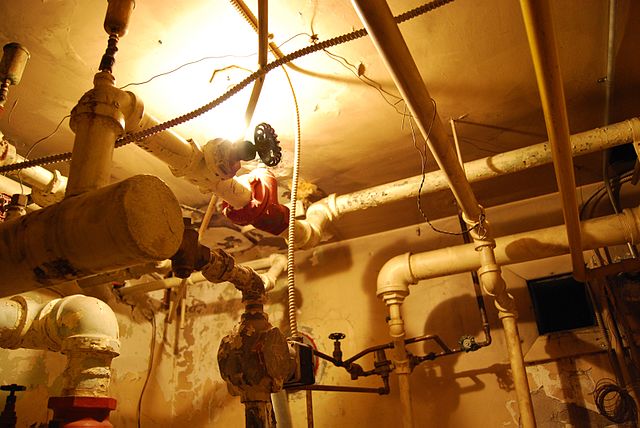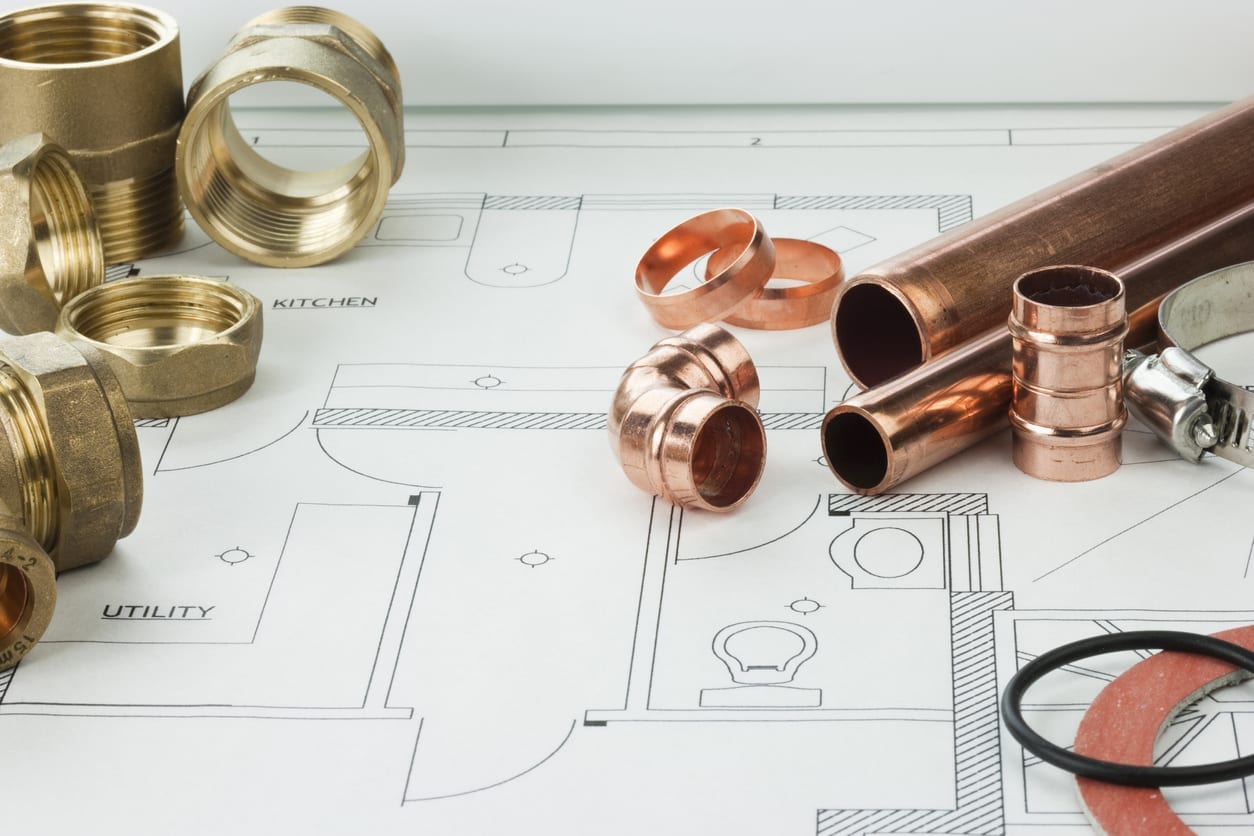Breaking Down Your Home's Plumbing System Anatomy
Breaking Down Your Home's Plumbing System Anatomy
Blog Article
What are your thoughts and feelings about Anatomy of a House: Understanding the Components?

Understanding how your home's plumbing system works is vital for each home owner. From providing tidy water for drinking, food preparation, and showering to securely removing wastewater, a well-maintained plumbing system is essential for your family's wellness and convenience. In this detailed overview, we'll discover the detailed network that comprises your home's pipes and deal ideas on upkeep, upgrades, and managing common issues.
Introduction
Your home's plumbing system is more than just a network of pipelines; it's an intricate system that guarantees you have accessibility to tidy water and reliable wastewater elimination. Understanding its elements and exactly how they collaborate can assist you avoid costly repairs and ensure everything runs efficiently.
Fundamental Parts of a Plumbing System
Pipes and Tubes
At the heart of your pipes system are the pipelines and tubing that carry water throughout your home. These can be constructed from numerous products such as copper, PVC, or PEX, each with its benefits in terms of resilience and cost-effectiveness.
Components: Sinks, Toilets, Showers, and so on.
Fixtures like sinks, toilets, showers, and bathtubs are where water is made use of in your house. Comprehending just how these components link to the plumbing system helps in detecting issues and preparing upgrades.
Valves and Shut-off Factors
Shutoffs manage the flow of water in your pipes system. Shut-off shutoffs are essential during emergency situations or when you need to make repair work, allowing you to separate parts of the system without interrupting water flow to the whole home.
Supply Of Water System
Key Water Line
The primary water line links your home to the municipal water or a personal well. It's where water enters your home and is distributed to numerous fixtures.
Water Meter and Pressure Regulatory Authority
The water meter steps your water use, while a stress regulator makes certain that water streams at a safe stress throughout your home's plumbing system, protecting against damage to pipelines and fixtures.
Cold Water vs. Warm water Lines
Understanding the distinction between cold water lines, which provide water directly from the primary, and hot water lines, which lug heated water from the hot water heater, assists in repairing and planning for upgrades.
Water drainage System
Drain Pipes and Traps
Drain pipelines carry wastewater away from sinks, showers, and toilets to the drain or septic tank. Traps prevent sewer gases from entering your home and additionally trap particles that could create blockages.
Ventilation Pipelines
Ventilation pipelines permit air into the water drainage system, avoiding suction that can slow drain and create traps to vacant. Proper air flow is essential for preserving the honesty of your plumbing system.
Value of Proper Drain
Making certain proper drain protects against backups and water damages. Regularly cleaning up drains and keeping catches can avoid expensive fixings and extend the life of your plumbing system.
Water Furnace
Types of Water Heaters
Hot water heater can be tankless or typical tank-style. Tankless heaters heat water on demand, while storage tanks save heated water for immediate use.
Exactly How Water Heaters Attach to the Pipes System
Understanding exactly how hot water heater attach to both the cold water supply and warm water distribution lines assists in identifying concerns like not enough hot water or leaks.
Maintenance Tips for Water Heaters
On a regular basis flushing your hot water heater to get rid of debris, examining the temperature settings, and examining for leaks can prolong its life-span and boost power performance.
Common Plumbing Issues
Leaks and Their Causes
Leaks can happen due to aging pipes, loose fittings, or high water pressure. Dealing with leaks quickly stops water damages and mold and mildew development.
Blockages and Obstructions
Blockages in drains pipes and bathrooms are commonly triggered by flushing non-flushable items or a buildup of grease and hair. Using drain screens and bearing in mind what drops your drains pipes can protect against blockages.
Signs of Plumbing Problems to Watch For
Low tide stress, slow-moving drains pipes, foul odors, or uncommonly high water expenses are indications of potential plumbing problems that need to be resolved quickly.
Pipes Maintenance Tips
Regular Assessments and Checks
Arrange yearly pipes evaluations to capture issues early. Seek indications of leakages, deterioration, or mineral accumulation in faucets and showerheads.
DIY Upkeep Tasks
Straightforward jobs like cleaning faucet aerators, looking for bathroom leaks using color tablet computers, or protecting exposed pipelines in chilly climates can prevent significant pipes issues.
When to Call a Professional Plumbing Professional
Know when a plumbing problem requires expert proficiency. Attempting intricate repair services without proper understanding can cause more damages and higher repair prices.
Upgrading Your Plumbing System
Factors for Upgrading
Updating to water-efficient fixtures or replacing old pipelines can improve water top quality, minimize water bills, and increase the worth of your home.
Modern Plumbing Technologies and Their Benefits
Discover technologies like smart leakage detectors, water-saving toilets, and energy-efficient water heaters that can conserve money and reduce ecological impact.
Price Considerations and ROI
Compute the in advance prices versus long-lasting financial savings when thinking about pipes upgrades. Many upgrades spend for themselves through minimized utility expenses and fewer repair services.
Environmental Influence and Preservation
Water-Saving Fixtures and Home Appliances
Mounting low-flow taps, showerheads, and toilets can substantially reduce water usage without giving up performance.
Tips for Minimizing Water Usage
Easy behaviors like repairing leakages promptly, taking shorter showers, and running full tons of washing and recipes can preserve water and lower your utility bills.
Eco-Friendly Plumbing Options
Consider lasting pipes materials like bamboo for flooring, which is durable and green, or recycled glass for countertops.
Emergency situation Preparedness
Actions to Take Throughout a Plumbing Emergency
Know where your shut-off shutoffs lie and how to shut off the water system in case of a ruptured pipe or major leak.
Importance of Having Emergency Contacts Useful
Keep get in touch with info for local plumbers or emergency solutions conveniently offered for quick reaction during a pipes situation.
DIY Emergency Fixes (When Appropriate).
Momentary solutions like making use of duct tape to patch a leaking pipe or putting a container under a trickling tap can decrease damage until a professional plumbing shows up.
Final thought.
Recognizing the makeup of your home's pipes system encourages you to keep it effectively, saving time and money on repairs. By adhering to normal upkeep routines and staying educated concerning contemporary plumbing technologies, you can guarantee your pipes system operates efficiently for years ahead.
HOW YOUR PLUMBING SYSTEM WORKS
Which Pipes Do What?
Blue lines = fresh water supply entering the building
Red lines = hot water supply entering the building
Grey lines = pipes carrying waste away from the building and venting pipes carrying gases away from the building (through the roof)
YOUR MAIN PLUMBING SYSTEMS
There are two main plumbing systems that support your home s basic plumbing needs one that brings clean water into your home, and one that sends dirty water away from your home. Connected to the toilet, bath, shower, and other faucets in your home, these two systems keep your water flowing in the right directions.
ACCESSING FRESH WATER
Fresh and clean water is brought into your home through the main water supply line . Filtered through one pipe, this water is pressured to flow into the various fixtures in your home at any given time.
This water can be sourced from a well located on your property, a pond or river (mostly cottages), or, as in most cases, from the city s municipal water treatment centre. However, it is important to note that water that is untreated, such as the water siphoned from ponds or rivers, may not be safe to drink. Personal water supplies always need to be treated for hardness and contaminants before consumed.
MUNICIPAL WATER SUPPLIES
Improve taste and odour
Remove sediment
Eliminate hardness
Reduce chlorine
COLD WATER SUPPLY VS. HOT WATER SUPPLY
Cold water flows into your home or building through the service line, which then distributes hot or cold water to your fixtures. This line is most commonly run through a central column that runs floor to floor. Hot water runs in short and straight pipes as the longer the pipeline, the more heat that will be lost in the transfer. Having shorter pipes also allows residents to access hot water more quickly.
WASTE WATER SYSTEM
Your wastewater system is divided into two parts pipes that send wastewater away from your home and venting pipes that send sewer gas away from your home. Sewage water travels through pipes that flush the water and waste towards local sewers that are operated and managed by your city or town. Most sewer systems rely on gravity to move the wastewater to where it needs to go.
The further away from your toilet or sink, the larger wastewater pipes become. This allows for waste to be disposed of from various parts of your home or business at once without pipe blockages. The angle and flow of these pipes are also essential for keeping your waste pipes clear of build up.
https://harrisplumbing.ca/how-your-home-plumbing-system-works/

HOW YOUR PLUMBING SYSTEM WORKS
Which Pipes Do What?
YOUR MAIN PLUMBING SYSTEMS
There are two main plumbing systems that support your home s basic plumbing needs one that brings clean water into your home, and one that sends dirty water away from your home. Connected to the toilet, bath, shower, and other faucets in your home, these two systems keep your water flowing in the right directions.
ACCESSING FRESH WATER
Fresh and clean water is brought into your home through the main water supply line . Filtered through one pipe, this water is pressured to flow into the various fixtures in your home at any given time.
This water can be sourced from a well located on your property, a pond or river (mostly cottages), or, as in most cases, from the city s municipal water treatment centre. However, it is important to note that water that is untreated, such as the water siphoned from ponds or rivers, may not be safe to drink. Personal water supplies always need to be treated for hardness and contaminants before consumed.
MUNICIPAL WATER SUPPLIES
COLD WATER SUPPLY VS. HOT WATER SUPPLY
Cold water flows into your home or building through the service line, which then distributes hot or cold water to your fixtures. This line is most commonly run through a central column that runs floor to floor. Hot water runs in short and straight pipes as the longer the pipeline, the more heat that will be lost in the transfer. Having shorter pipes also allows residents to access hot water more quickly.
WASTE WATER SYSTEM
Your wastewater system is divided into two parts pipes that send wastewater away from your home and venting pipes that send sewer gas away from your home. Sewage water travels through pipes that flush the water and waste towards local sewers that are operated and managed by your city or town. Most sewer systems rely on gravity to move the wastewater to where it needs to go.
The further away from your toilet or sink, the larger wastewater pipes become. This allows for waste to be disposed of from various parts of your home or business at once without pipe blockages. The angle and flow of these pipes are also essential for keeping your waste pipes clear of build up.
https://harrisplumbing.ca/how-your-home-plumbing-system-works/
We were made aware of that editorial on through a pal on a different site. Don't hesitate to take a moment to share this write-up if you appreciated it. We value reading our article about Anatomy of a House: Understanding the Components.
Call Today Report this page